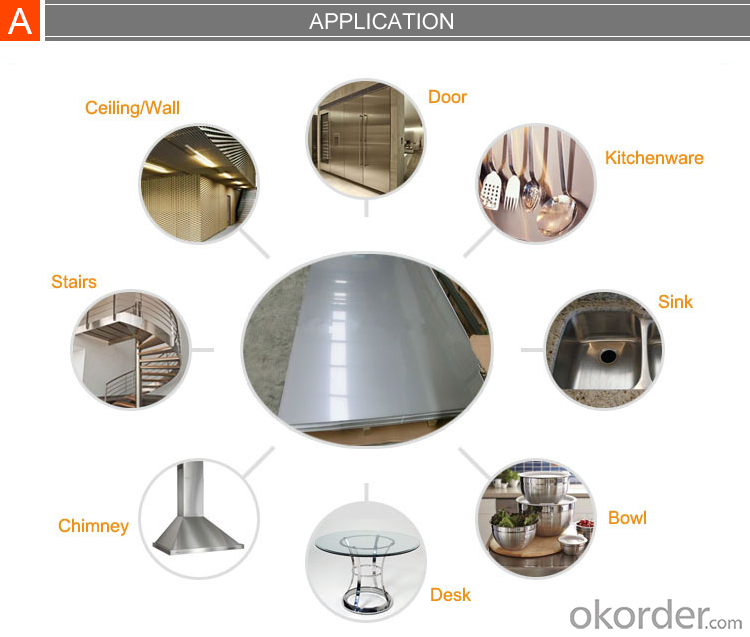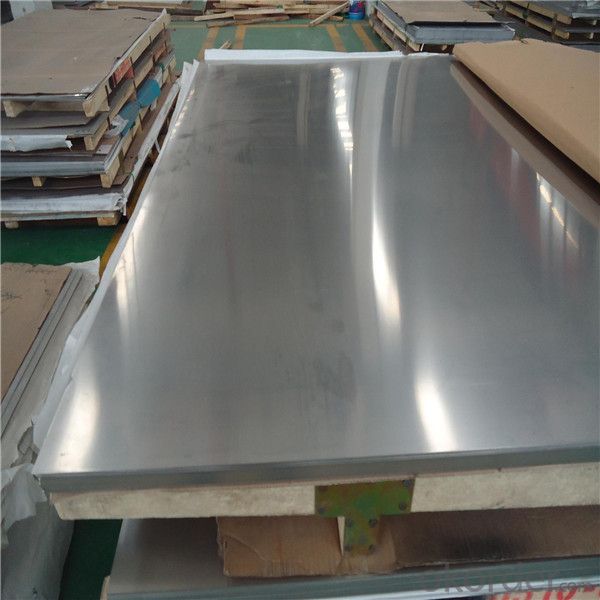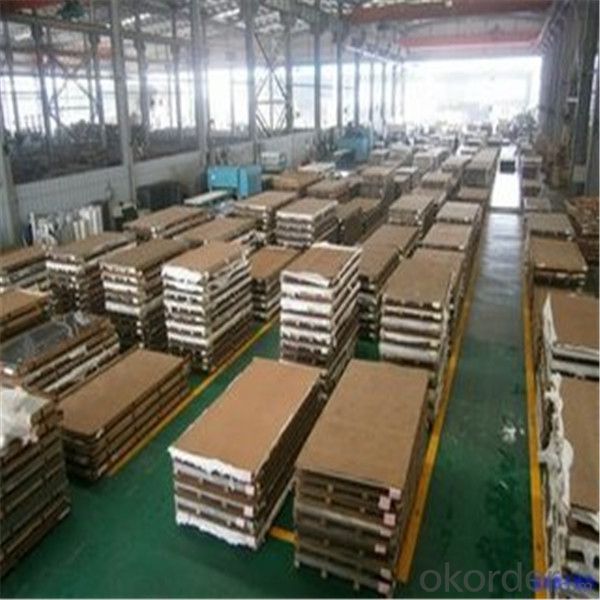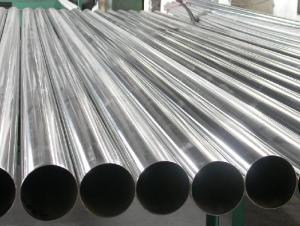1.5mm 4X8 Corten A Steel Plate in China
- Loading Port:
- Shanghai
- Payment Terms:
- TT OR LC
- Min Order Qty:
- 1 m.t.
- Supply Capability:
- 20000 m.t./month
OKorder Service Pledge
OKorder Financial Service
You Might Also Like
Specification
Corten A Steel Plate
1.Specification and Application:
Specification: Corten A is a weather resistant steel created by alloying copper, chromium and nickel.
Corten A has added phosphorous which makes the material best suited for gas flue applications and for aesthetic facias. The material is not recommended in heavy load bearing applications – in this case Corten B or S355J2W should be considered.
Application: The steel is used for various types of welded, bolted and riveted constructions e.g. steel frame structures, bridges, tanks and containers, exhaust systems, vehicles and equipment constructions
2. Steel Grade :
Corten A
3. The dimension:
Thickness: 6mm to 300mm,
Width: 1500mm to 4050mm,
Length: 3000mm to 15000mm
4. Chemical composition: The Chemical is max composition of product analysis:
Grade | C | Si | Mn | P | S |
Corten A | 0.12 | 0.25-0.75 | 0.20-0.50 | 0.07-0.15 | 0.030 |
Carbon Equivalent: Ceq = [C+Mn/6+(Cr+Mo+V)/5+(Ni+Cu)/15]%
5. Mechanical properties at ambient temperature:
Grade | Thickness | Yield | Tensile | Elongation |
Corten A | mm | Min Mpa | Mpa | Min % |
6-12 | 345 | 485 | 20 |
6. Certificates:
Our steel plates have been certified by TUV, SGS, CE and nine Classification Societies: ABS, DNV, LR, GL, BV, KR, RINA, CCS, NK. Each plate has the Mill Certificate Test EN 10204 3.1/3.2 Version.
7. Equivalent steel grade of Corten A:
Europe | UNI | Germany | France | UK | Sweden | India | Japan |
S355J0WP | Fe510 C1K1 | E 36WA3 | WR50A |
Our Advantage
a. Professinal international trade experience in steel product field.
b. Strict with quality control, to make every steel pipe perfect.
c. For more detail information please contact us.



- Q: What are the different types of stainless steel sheet finishes for architectural applications?
- Architectural applications often utilize different types of stainless steel sheet finishes to enhance appearance and protect against corrosion and wear. 1. The most commonly used stainless steel sheet finish is No. 1, also known as "hot rolled annealed and pickled." This finish involves hot rolling the sheet, resulting in a rough, dull surface. It is then annealed and pickled to remove impurities, leaving a clean and uniform surface. 2. No. 2B Finish is achieved by cold rolling the sheet after annealing and pickling. This creates a smooth, reflective surface with a slight grainy texture. It is preferred for applications requiring high corrosion resistance and a polished appearance. 3. No. 4 Finish, also called "brushed finish," is accomplished by mechanically polishing the sheet with abrasive belts or brushes. This produces a satin-like look with fine parallel lines. No. 4 finish is commonly used for decorative purposes in architectural applications such as wall panels, elevator interiors, and column covers. 4. No. 8 Mirror Finish is achieved by mechanically polishing the sheet to create a highly reflective, mirror-like surface. It offers a bright appearance and is often used for decorative applications like wall cladding, signage, and decorative trim. 5. Bead Blasted Finish involves blasting the sheet with fine glass beads to create a textured, matte surface. This finish provides a unique aesthetic and is commonly used when a non-reflective, tactile surface is desired, such as in elevator doors, handrails, and countertops. 6. Patterned Finishes are created by embossing or etching the sheet with various patterns or textures. This adds visual interest to architectural applications, commonly used for wall panels, ceiling tiles, and decorative screens. These are just a few examples of the most commonly used stainless steel sheet finishes in architectural applications. Each finish offers distinct aesthetic and functional characteristics, allowing architects and designers to select the most suitable finish for their specific project requirements.
- Q: How do you bend stainless steel sheets?
- Bending stainless steel sheets requires a combination of skill, knowledge, and the right tools. Here are the steps to bend stainless steel sheets effectively: 1. Determine the type of stainless steel you are working with: Stainless steel comes in different grades, each with its own unique characteristics. Knowing the specific grade of stainless steel will help you understand its malleability and how it responds to bending. 2. Prepare the stainless steel sheet: Before you begin bending, make sure the stainless steel sheet is clean and free of any dirt or debris. You can use a mild detergent and a soft cloth to clean the surface. 3. Mark the bending line: Measure and mark the exact spot where you want to bend the stainless steel sheet. Use a ruler or a straight edge to ensure a precise and straight line. 4. Use a suitable bending tool: There are various bending tools available for stainless steel sheets, such as a press brake, a rolling machine, or a bending machine. Choose the appropriate tool based on the thickness and size of the stainless steel sheet. 5. Apply pressure gradually: Place the stainless steel sheet into the bending tool, ensuring that it aligns with the marked bending line. Start applying pressure gradually, working your way from one end to the other. Avoid applying excessive force too quickly, as it can cause the sheet to crack or deform. 6. Adjust the bending angle: Depending on the desired angle of the bend, you may need to adjust the position of the stainless steel sheet within the bending tool. Use the tool's adjustments or additional tools like clamps to achieve the desired angle accurately. 7. Check the result: Once you have completed the bending process, carefully remove the stainless steel sheet from the bending tool. Inspect the bend for any defects, cracks, or unevenness. If necessary, you can use a rubber mallet or a hammer with a soft face to make minor adjustments. Remember, bending stainless steel sheets requires practice and precision. It is advisable to start with smaller projects and gradually work your way up to more complex bends. If you are unsure or lack experience, consulting a professional in metal fabrication is always a good idea to ensure the best results.
- Q: Can stainless steel sheets be used for water purification systems?
- Water purification systems can utilize stainless steel sheets. Due to its resistance to corrosion, durability, and hygienic properties, stainless steel is commonly chosen as a material for water purification systems. It can withstand harsh environmental conditions without rusting, making it suitable for long-term use in water treatment applications. Furthermore, stainless steel does not react with water, ensuring the purity and safety of the treated water by not leaching harmful substances. Its smooth and non-porous surface is easy to clean and maintain, reducing the risk of bacterial growth and contamination. In conclusion, stainless steel sheets are an excellent option for constructing various components of water purification systems, such as tanks, filters, and pipes.
- Q: What stainless steel can be used instead of galvanized sheet?
- Zinc plating is mainly for beauty and no rust;Stainless steel is the primary quality of stainless steel;If both really replace the 201 can be, mainly considering the price of stainless steel;Galvanized plate with stainless steel to replace my feeling is not very ideal, costs a lot, propose instead of using cold board.Galvanized steel sheet is to prevent the corrosion of steel plate surface and prolong its service life, and the surface of steel plate is coated with a layer of metal zinc. This kind of zinc coated steel plate is called galvanized sheet.
- Q: What are the common methods of cutting stainless steel sheets?
- There are several common methods of cutting stainless steel sheets, each with its own advantages and limitations. Here are a few commonly used methods: 1. Shearing: Shearing involves using a machine with two blades to slice through the stainless steel sheet. This method is suitable for thinner sheets and produces clean, straight cuts. However, it may leave a slight burr on the edge of the cut. 2. Plasma cutting: Plasma cutting is a versatile method that uses a high-temperature plasma arc to melt and blow away the metal. It is effective for cutting stainless steel sheets of various thicknesses and shapes. Plasma cutting provides fast, precise cuts and can handle both straight and curved lines. 3. Laser cutting: Laser cutting uses a focused laser beam to cut through stainless steel sheets. It is highly accurate and produces smooth, precise cuts with minimal distortion. Laser cutting is suitable for both thin and thick sheets, but it can be slower than other methods for thicker materials. 4. Waterjet cutting: Waterjet cutting involves using a high-pressure stream of water mixed with abrasive particles to cut through stainless steel. This method is precise and can handle various thicknesses and shapes. Waterjet cutting is known for its clean edges and the ability to cut without heat-affected zones. However, it may be slower than other methods and can be more expensive. 5. Sawing: Sawing is a traditional method that involves using a saw blade to cut through stainless steel sheets. It is suitable for thicker sheets and can handle both straight and curved cuts. Sawing produces relatively clean cuts but may result in more material waste compared to other methods. These are just a few of the common methods used to cut stainless steel sheets. The choice of method depends on factors such as the thickness of the sheet, desired cut quality, shape complexity, and budget. It is important to consider the specific requirements of the project and consult with professionals to determine the most suitable cutting method.
- Q: What are the different types of stainless steel sheet embossing patterns available?
- There are various types of stainless steel sheet embossing patterns available, including diamond, linen, quilted, hammered, and checker plate.
- Q: Can stainless steel sheets be used for elevator doors?
- Yes, stainless steel sheets can be used for elevator doors. Stainless steel is a popular choice for elevator doors due to its durability, corrosion resistance, and aesthetic appeal. It is able to withstand the wear and tear associated with daily use and is resistant to scratches, dents, and stains. Stainless steel also offers a sleek and modern look, making it a suitable material for elevator doors in various settings such as commercial buildings, residential complexes, and hotels. Additionally, stainless steel sheets can be customized to meet specific design requirements, allowing for a wide range of finishes, textures, and patterns to be applied, further enhancing the overall appearance of the elevator doors.
- Q: Can stainless steel sheets be used for elevator interiors?
- Yes, stainless steel sheets can be used for elevator interiors. Stainless steel is a popular material choice for elevator interiors due to its durability, aesthetic appeal, and ease of maintenance. It is resistant to corrosion, scratches, and stains, making it ideal for high-traffic areas like elevators. Stainless steel sheets can be customized to fit the specific design requirements of the elevator, and they come in a variety of finishes, such as brushed, mirror, or patterned, allowing for a sleek and modern look. Additionally, stainless steel is easy to clean and sanitize, which is especially important in public spaces like elevators where hygiene is a priority. Overall, stainless steel sheets offer a versatile and practical solution for elevator interiors.
- Q: What does 8K stainless steel mean?
- 8K mirror surface definition: stainless steel surface after grinding and polishing, the surface is bright as a mirror, the photo reflects the person, commonly known as mirror 8K, it has corrosion resistance; and the mirror plate is the processing of follow-up color or etching board substrate. Mainly used in all kinds of decoration or metal optical products.
- Q: What's the difference between galvanized steel and stainless steel?
- Stainless steel is often divided into martensitic steel, ferritic steel, austenitic steel, austenitic ferrite (duplex) stainless steel and precipitation hardening stainless steel according to the state of the organization. In addition, can be divided into components: chromium stainless steel, chromium nickel stainless steel and chromium, manganese, nitrogen, stainless steel and so on.
Send your message to us
1.5mm 4X8 Corten A Steel Plate in China
- Loading Port:
- Shanghai
- Payment Terms:
- TT OR LC
- Min Order Qty:
- 1 m.t.
- Supply Capability:
- 20000 m.t./month
OKorder Service Pledge
OKorder Financial Service
Similar products
Hot products
Hot Searches
Related keywords




















